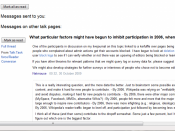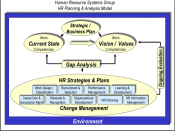Problem Solution: InterClean, Inc.
InterClean, Inc. is preparing for a global cultural change that will position the company for future growth in the industrial cleaning and sanitation industry. The new vision that David Spencer, chief executive officer, communicated is not currently aligned with the organizations current practices. InterClean employees are fearful of the change and the required new skills needed to remain employed at the company. Spencer and his senior leadership team believe that reorganizing the company into multi-functional teams with cross training for all employees will be a key to their success (University of Phoenix, 2009). Senior management needs to create a stronger organizational culture by adding value for employees.
Situation AnalysisIssue and Opportunity IdentificationThe sanitation industry is a competitive $8 billion dollar institution (University of Phoenix, 2009). Trying to stay ahead of their competition, Spencer communicated a new vision that will require an organizational change and an overhaul of the human resource practices.
Spencer wants to provide a broad set of knowledge and service solutions to consumer and small business customers who will build long-term relationships based on trust and value to the customer. Unfortunately, employees and current practices at InterClean are not aligned with the new strategic vision created and communicated by Spencer.
The new vision will increase revenue through InterClean's succession planning, total quality management (TQM), cross-training and organizational capability. InterClean can improve brand image and begin establishing long-term customer relationships. The new image will regroup the company into multi-functional teams that will streamline their cleaning efforts while keeping up-to-date with environmental regulations.
A cultural transformation needs to occur at InterClean. "Managers need to be especially sensitive to the work values of their subordinates when making changes in jobs, working hours, or other aspects of the work situation" (George & Jones, 2005, p.


